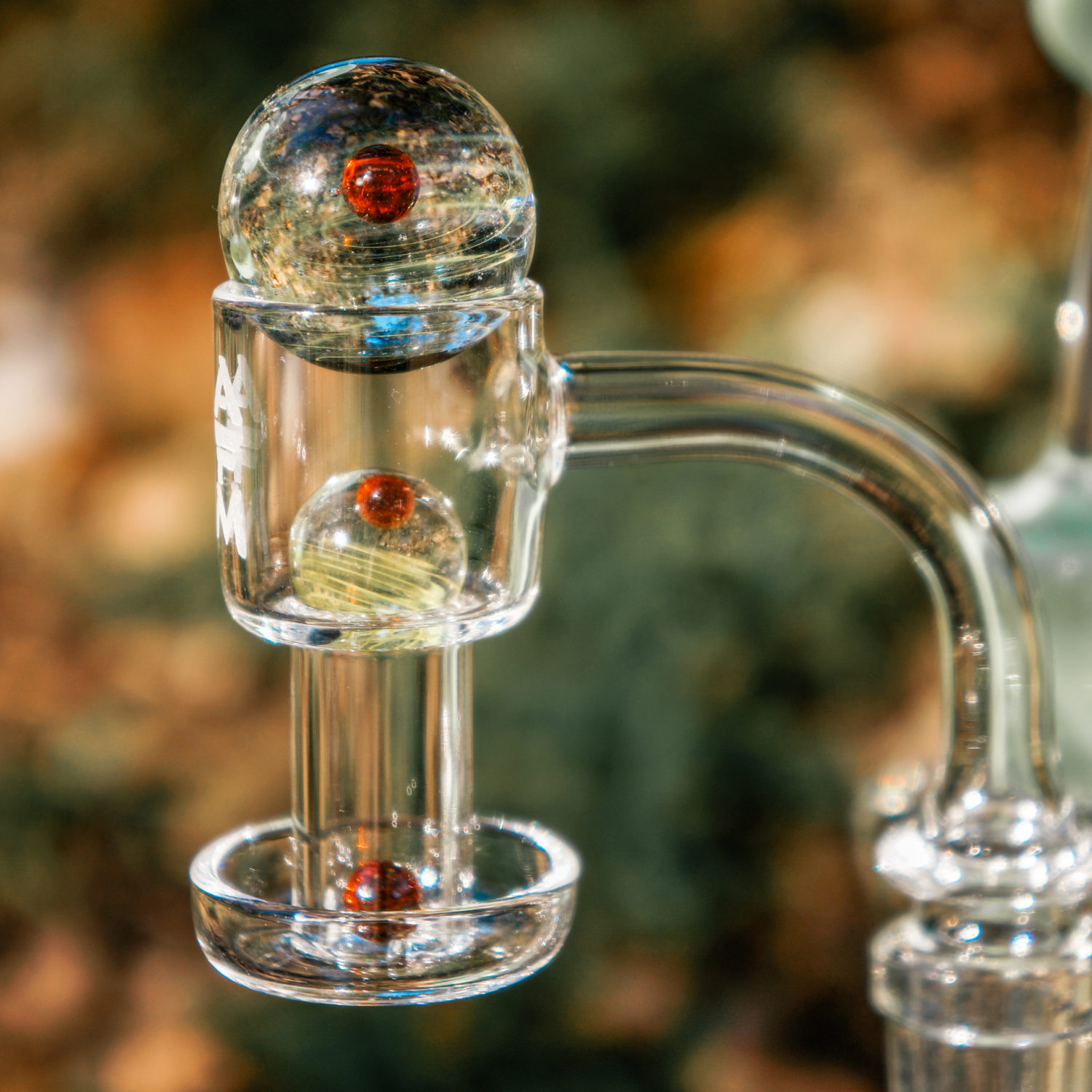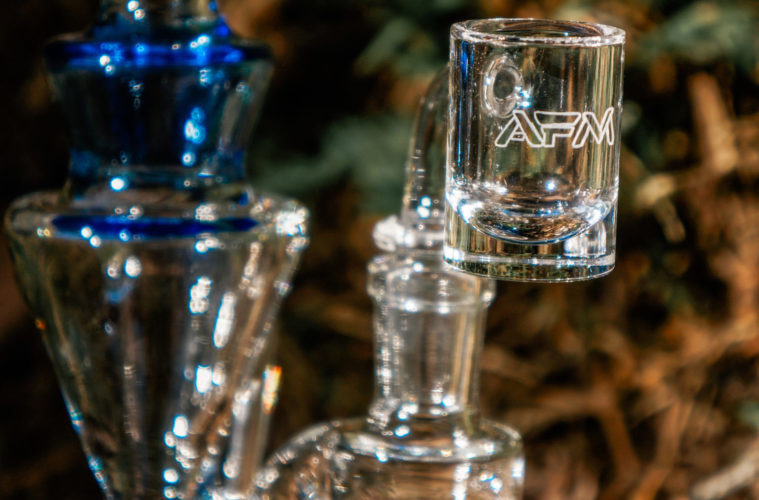Los Angeles’ Alien Flower Monkey Glass is crushing it with some of the best deals on American-made quartz deals on the market
We sat down to chat with AFM Glass’s general manager Dimitar Tantchev to hear the ups and downs of the glass game since its founding in 2014 after its owners had already spent years in the scene prior to opening. Over the years, they scaled up production internationally, but are still producing about 20% of their products domestically, most notably, their quartz banger line.
Quartz bangers are the most time-tested delivery medium of the dab era. In 2008, Hash consumers saw the first skillets for smoking the new hydrocarbon-extracted hash that was a bit more refined than the honey oils that had been going around for years. Titanium nails quickly became the norm in the early 2010s. By 2015, the quartz bucket design of the banger from Quave glass would become the definitive style. Within a few years, different variations were being produced all over the world.
Lots of other cool quartz smoking mechanisms would come out, the terp slurper among the most successful. But not everyone wants to deal with a marble set every time they want to smoke a little hash. Hell, many don’t even want to heat up a banger with a torch and have switched to electronic dabs with companies like Puffco, Carta, and Ispire, developing their own followings. But many purists still love a quartz banger.

AFM Glass Terp Slurper
Where AFM comes into play is how accessible it’s made domestic bangers. While the price has dipped a bit more in recent years, for most of the 2010s you could expect to pay north of $100 at the bare minimum for good American quartz bangers. AFM has been able to cut that price in half.
Tantchev noted when the AFM was originally founded, one of the goals was to spice up the scientific glass space with a bit more color without going all-in as headie art pieces. When things kicked off originally, the market was still dominated by clear tubes. They found a comfortable position in the business-to-business space hitting mega trade shows, like Champs, where they help retailers from all over America stock their shelves.
“We kind of produce just really cool, fun, unique and colorful styles,” Tantchev told L.A. Weekly. “We tried to create color combos that kind of just are unique and just create some new styles.”
Between all of the different beakers, tubes, and rigs, Tantchev estimated they were offering just over 50 different styles right now.
As for why their domestic quartz products come in so far below others?
“It’s a good question. I think it’s really kind of a supply and demand, and a perceived value. Or maybe not so much both aspects. It depends on who you asked, what is more important? I think there’s definitely the art and like apprenticeship of glassblowing and going out to be far superior quality, not just by being a thicker glass or thinner,” Tantchev said.
In the end, the deals they are offering come down to the inhouse tech.
“I would say the way to answer your question in the long process of how we’re able to offer the price that we’re offering is, is just by you know, scaling our operation,” Tantchev said. “And we’ve just kind of figured out strategic operations, which were able to save a lot of money and pass that off to our consumers as opposed to taking it into our pockets.”
Advertising disclosure: We may receive compensation for some of the links in our stories. Thank you for supporting LA Weekly and our advertisers.

